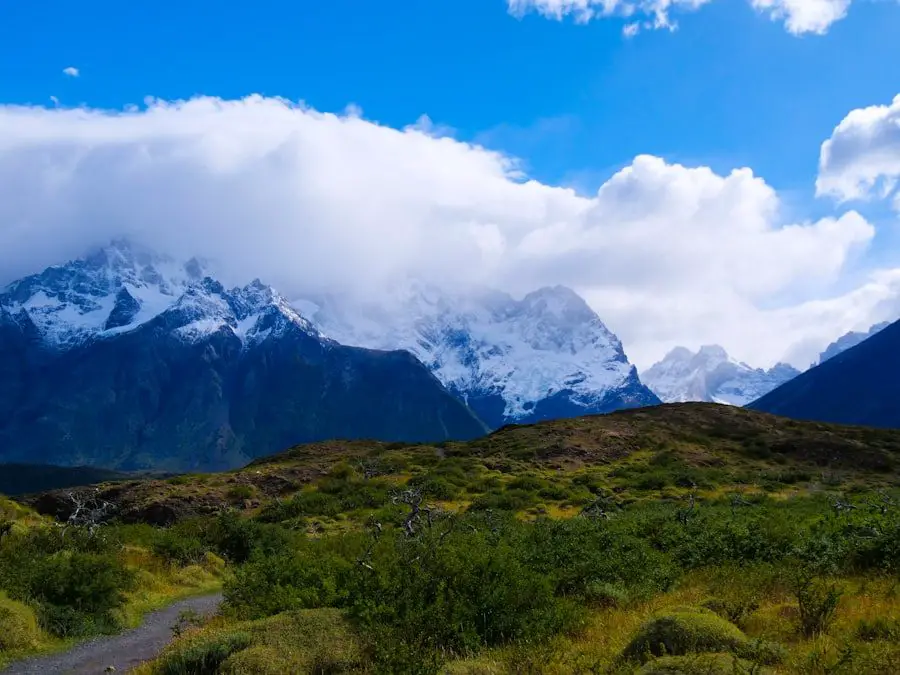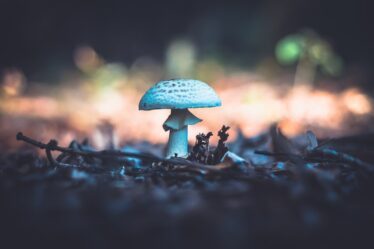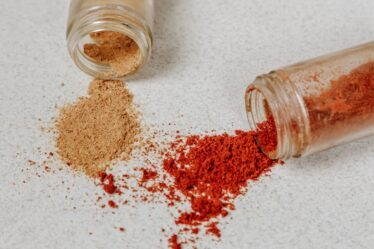
The chili ghost pepper, also known as Bhut Jolokia, is one of the hottest chili peppers in the world. It originated in the northeastern region of India and has gained popularity in the culinary world for its intense heat and unique flavor. The ghost pepper gets its name from its ghostly appearance, with a wrinkled, pale yellow or red skin. It is widely used in various cuisines around the world, adding a fiery kick to dishes.
The popularity of the chili ghost pepper can be attributed to its extreme heat and the thrill that comes with consuming it. Many people enjoy the challenge of eating spicy foods, and the ghost pepper provides a level of heat that is unmatched by most other chili peppers. Its intense spiciness has made it a favorite among chili enthusiasts and those who enjoy pushing their taste buds to the limit.
Key Takeaways
- Chili Ghost Pepper is one of the hottest peppers in the world, with a Scoville rating of over 1 million.
- The Scoville Scale measures the heat of peppers, and understanding it can help you choose the right pepper for your dish.
- Eating Chili Ghost Pepper can have health benefits, including pain relief and improved digestion.
- When cooking with Chili Ghost Pepper, use gloves and be careful not to touch your face or eyes.
- Chili Ghost Pepper pairs well with a variety of cuisines, including Mexican, Indian, and Thai.
The Scoville Scale: Understanding the Heat of the Chili Ghost Pepper
The Scoville scale is a measurement of the heat or spiciness of chili peppers. It was developed by pharmacist Wilbur Scoville in 1912 and is still widely used today. The scale measures the concentration of capsaicin, the compound responsible for the heat in chili peppers.
On the Scoville scale, the chili ghost pepper ranks among the hottest peppers in the world. It has an average Scoville rating of over one million units, making it significantly hotter than other popular chili peppers like jalapenos or habaneros. To put it into perspective, a jalapeno typically ranges from 2,500 to 8,000 Scoville units, while a ghost pepper can reach up to 1,041,427 units.
Health Benefits of Eating Chili Ghost Pepper
While consuming chili ghost pepper may seem like a challenge for some, it actually offers several health benefits. The pepper is low in calories and contains a good amount of vitamins and minerals. It is rich in vitamin C, which is known for its immune-boosting properties. The ghost pepper also contains vitamin A, which is essential for maintaining healthy skin and eyesight.
In addition to its nutritional value, the chili ghost pepper has been found to have several health benefits. It contains capsaicin, which has been shown to have anti-inflammatory and pain-relieving properties. Capsaicin can also help boost metabolism and aid in weight loss by increasing fat oxidation. Furthermore, the heat from the ghost pepper can stimulate digestion and improve gut health.
Cooking with Chili Ghost Pepper: Tips and Tricks
| Topic | Metric |
|---|---|
| Heat Level | 1,000,000 – 1,500,000 Scoville Heat Units |
| Flavor Profile | Earthy, Smoky, Fruity, and Extremely Spicy |
| Handling | Wear gloves when handling, avoid touching eyes or face |
| Cooking Tips | Use sparingly, pair with sweet or creamy flavors to balance heat |
| Recipes | Ghost Pepper Salsa, Ghost Pepper Hot Sauce, Ghost Pepper Wings |
Cooking with chili ghost pepper requires some caution, as its intense heat can easily overpower a dish. To handle the pepper safely, it is recommended to wear gloves while cutting or handling it. The capsaicin in the pepper can cause a burning sensation on the skin, so it’s important to avoid touching your face or eyes after handling it.
To reduce the heat of the chili ghost pepper in a dish, there are a few cooking techniques that can be used. Removing the seeds and membranes from the pepper can help reduce its spiciness. Roasting or grilling the pepper can also mellow out its heat and add a smoky flavor to the dish. Additionally, pairing the ghost pepper with ingredients that have a cooling effect, such as dairy products or citrus fruits, can help balance out the heat.
There are countless recipes that incorporate chili ghost pepper, ranging from spicy salsas and hot sauces to fiery curries and stews. One popular recipe is ghost pepper chicken wings, where the wings are coated in a spicy ghost pepper sauce and then baked or fried until crispy. Another delicious option is ghost pepper salsa, which combines diced tomatoes, onions, cilantro, lime juice, and finely chopped ghost peppers for a fiery dip.
Pairing Chili Ghost Pepper with Different Cuisines
Chili ghost pepper can enhance the flavors of various cuisines, adding a fiery kick to dishes from around the world. It pairs particularly well with Mexican cuisine, where it can be used to spice up salsas, enchiladas, and tacos. The heat of the ghost pepper complements the bold flavors of Mexican spices and ingredients.
Indian cuisine also embraces the heat of the chili ghost pepper. It is commonly used in curries, chutneys, and pickles, adding a fiery element to these dishes. The ghost pepper’s intense heat is balanced by the complex flavors of Indian spices like cumin, coriander, and turmeric.
Thai cuisine is another culinary tradition that embraces spicy flavors, making it a perfect match for the chili ghost pepper. It can be used in Thai curries, stir-fries, and soups to add a fiery kick. The ghost pepper’s heat pairs well with the sweet, sour, and savory flavors commonly found in Thai dishes.
Preserving Chili Ghost Pepper: Drying, Freezing, and Pickling

If you have an abundance of chili ghost peppers and want to preserve them for later use, there are several methods you can use. Drying is one of the most common methods for preserving chili peppers. To dry chili ghost peppers, simply string them together with a needle and thread and hang them in a dry, well-ventilated area. Once they are completely dried out, you can store them in an airtight container.
Freezing is another option for preserving chili ghost peppers. To freeze them, simply wash and dry the peppers, then place them in a freezer bag or container. They can be stored in the freezer for up to six months. When you’re ready to use them, simply thaw them out and they’re ready to be incorporated into your favorite recipes.
Pickling is a popular method for preserving chili peppers and can add a tangy flavor to the ghost peppers. To pickle chili ghost peppers, you will need vinegar, water, salt, and any additional spices or herbs you prefer. Simply combine the ingredients in a saucepan and bring to a boil. Once the mixture has cooled, pour it over the peppers in a jar and seal tightly. The pickled ghost peppers can be stored in the refrigerator for several months.
The World’s Hottest Chili Ghost Pepper Recipes
For those who enjoy the thrill of eating spicy foods, there are plenty of recipes that showcase the heat of the chili ghost pepper. One popular recipe is ghost pepper hot sauce, where the peppers are blended with vinegar, garlic, and salt to create a fiery condiment. Another option is ghost pepper chili, where the peppers are used to add intense heat to a classic chili recipe.
If you’re feeling adventurous, you can try making ghost pepper-infused vodka or tequila. Simply add a few chopped ghost peppers to a bottle of vodka or tequila and let it sit for a few days to infuse the flavors. The resulting spirit can be used to make spicy cocktails or enjoyed on its own.
Growing Chili Ghost Pepper: A Beginner’s Guide
If you’re interested in growing your own chili ghost peppers, it is important to note that they require specific growing conditions. They thrive in warm climates with plenty of sunlight, so it’s best to grow them outdoors in a sunny spot. The soil should be well-draining and rich in organic matter.
To start growing chili ghost peppers, you will need seeds or seedlings. If you choose to start from seeds, they should be planted indoors about 8-10 weeks before the last frost date. Once the seedlings have grown to about 6 inches tall, they can be transplanted outdoors.
When planting the seedlings, make sure to space them about 18-24 inches apart to allow for proper growth. Water the plants regularly, making sure the soil is consistently moist but not waterlogged. Fertilize the plants every few weeks with a balanced fertilizer to promote healthy growth.
It’s important to note that chili ghost peppers can take several months to mature, so patience is key. Once the peppers have reached their full size and have turned a vibrant red or yellow color, they are ready to be harvested.
The History and Origin of Chili Ghost Pepper
The chili ghost pepper has a rich history and originates from the northeastern region of India. It has been cultivated in the states of Assam, Nagaland, and Manipur for centuries. The pepper was traditionally used in local cuisine as a way to add heat and flavor to dishes.
The ghost pepper gained international attention in the early 2000s when it was recognized as one of the hottest chili peppers in the world. It quickly gained popularity among chili enthusiasts and chefs who were looking for new ways to add heat to their dishes. Today, the chili ghost pepper is widely cultivated and used in various cuisines around the world.
In addition to its culinary significance, the chili ghost pepper holds cultural importance in India. It is often used in religious ceremonies and festivals, symbolizing purification and protection against evil spirits. The pepper is also believed to have medicinal properties and is used in traditional Ayurvedic medicine for its healing properties.
Chili Ghost Pepper: Myths and Facts
There are several myths and misconceptions surrounding the chili ghost pepper, many of which have been debunked by scientific research. One common myth is that consuming ghost peppers can cause permanent damage to the digestive system or even death. While it is true that eating extremely spicy foods can cause discomfort and temporary pain, there is no evidence to suggest that it can cause long-term harm.
Another myth is that drinking water or milk can help alleviate the burning sensation caused by eating ghost peppers. While water and milk can provide temporary relief, they do not actually neutralize the capsaicin in the pepper. Consuming dairy products, however, can help to disperse the capsaicin and provide some relief.
It is also important to note that the heat of chili ghost peppers can vary depending on factors such as growing conditions and individual tolerance. While they are generally considered to be extremely hot, there may be variations in heat levels from pepper to pepper.
In conclusion, the chili ghost pepper is a fiery and flavorful chili pepper that has gained popularity in the culinary world. It ranks among the hottest peppers in the world on the Scoville scale and offers several health benefits. Cooking with chili ghost pepper requires caution, but it can enhance the flavors of various cuisines. Whether you’re preserving them for later use or growing your own, chili ghost peppers offer a thrilling and spicy experience for those who dare to try them.
If you’re a fan of spicy foods like the chili ghost pepper, you might also enjoy exploring unique and flavorful cocktails. Check out this article on Flavorful Sips that offers a comprehensive guide to creating the perfect Strawberry Daiquiri cocktail. From choosing the right ingredients to mastering the art of garnishing, this article will help you elevate your mixology skills and create a refreshing drink that perfectly balances sweetness and tanginess. So why not take a break from the heat of chili peppers and indulge in a cool and fruity Strawberry Daiquiri? Read more here.



